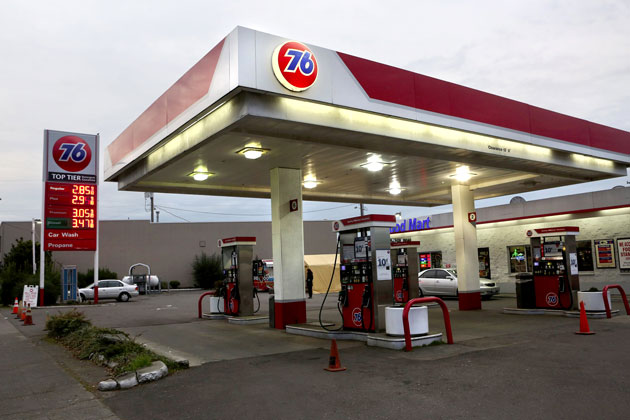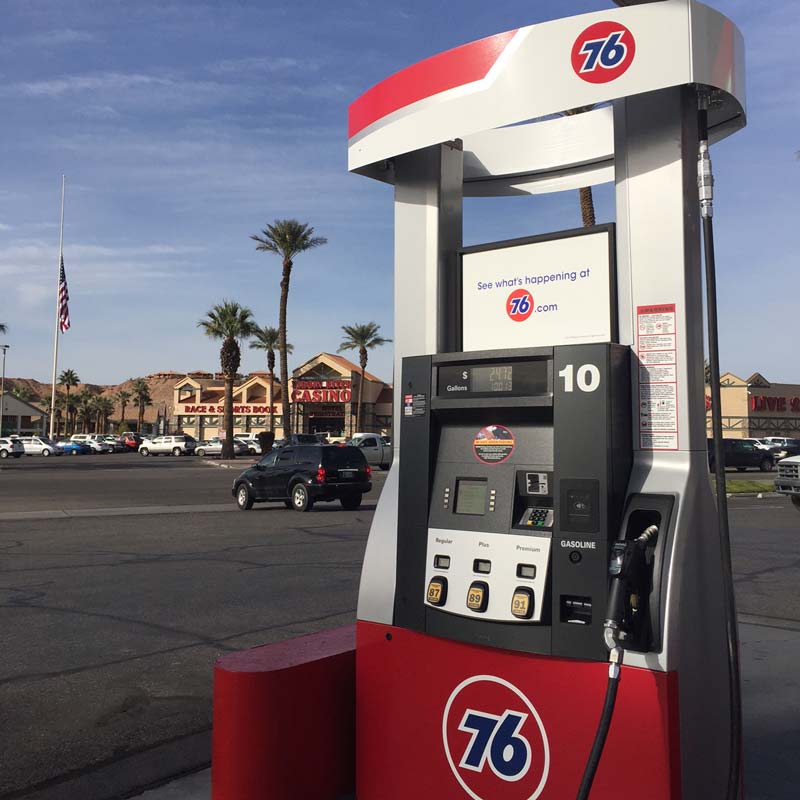

Of Wong’s many significant contributions to the Southern California built environment, including the LAX Master Plan and CBS Television City, Jack Colker’s Union 76 Gas Station is one of his most successful and enduring. With its prominent location near Beverly Hills City Hall, the station’s bright swooping canopy, punctuated by brightly painted tiles, functioned to attract automobile drivers, in the manner that midcentury Googie-style buildings used dramatic glass windows, lighting, and creative signage to advertise their businesses. His Union 76 Gas Station soon became the most successful in the area. After the war ended, he had so impressed Union Oil officials that he began what would be a lifelong career in the service-station business, starting his first gas station behind the Ambassador Hotel in the Mid-Wilshire district.

After Standard Oil chose another design for its station, Union Oil, whose headquarters Pereira had just completed in Los Angeles, opted to use the design and awarded the station to a loyal employee, Jack Colker.Ĭolker arrived in Los Angeles in 1937 from Pittsburgh and got his first job pumping gas during World War II. An adjacent pole, topped by the “76” globe (originally painted company orange, now red) provides signage. The dramatically upwardly swooping canopy, atop three piers, dominates the site, dwarfing a modest, concrete-block office and service building at the rear. Wong aimed for simplicity of expression, with the new airport as his inspiration. Pereira and Associates, for Standard Oil, as part of a competition for a gas station to be located near the new Los Angeles International Airport. Jack Colker’s Union 76 Gas Station was first designed in 1960 by Gin Wong, a partner in the firm of William L. In the early 1960s, the gas station that had historically operated on the site was replaced in favor of a more modern version, one that would come to represent the Googie aesthetic of the postwar era.
76 GAS STATION DRIVERS
It offered a popular new drive-in feature, whereby, for example, drivers could enter the gas station by turning left off Crescent Drive and exiting onto Little Santa Monica. The first gas station built on the current site was constructed in 1924 and featured a small rectangular building and a steel canopy that faced northeast toward the flats of Beverly Hills and, ultimately, Sunset Boulevard. The mile-long stretch of South Santa Monica Boulevard, adjacent to the gas station, is known in the area as “Little Santa Monica” to distinguish it from the larger thoroughfare to the north.Īlthough the Pacific Electric streetcar line originally operated along Santa Monica Boulevard until the last cars were removed in the 1950s, the popularity of the automobile transformed the Boulevard (also known as Highway 2 and Route 66), along with Wilshire Boulevard, into a major citywide thoroughfare, connecting drivers traveling from downtown and Hollywood to Santa Monica and the ocean. Envisioned as an elite community for the wealthy, particular care was given to the separation of residential and commercial districts, with Santa Monica and Wilshire boulevards serving as the respective northern and southern boundaries of the triangular-shaped commercial district.


Green and the Rodeo Land and Water Company in 1906, when Green hired landscape architect Wilbur Cook and architect Myron Hunt to design the master plan. The city was developed from former rancho land by Burton E. Beverly Hills is located on the Westside of Los Angeles, approximately 12 miles from downtown. The Gas Station is located on a triangular parcel on the eastern end of the commercial district, known as the Business Triangle, across from Beverly Hills City Hall, a few streets east of world-famous Rodeo Drive. Intended for a location near the new Los Angeles International Airport, the gas station’s most striking feature is its space-age red canopy that swoops upward, appearing ready for take-off, and glows with florescent lights at night. It is an internationally recognized and beloved landmark, beautifully evoking a significant historical moment in the development of Southern California, when the automobile was king and Los Angeles was the city of the future. Jack Colker’s Union 76 Gas Station is a Googie-style modern gas station, located on the southwest corner of Crescent Drive and Little Santa Monica Boulevard in Beverly Hills.


 0 kommentar(er)
0 kommentar(er)
